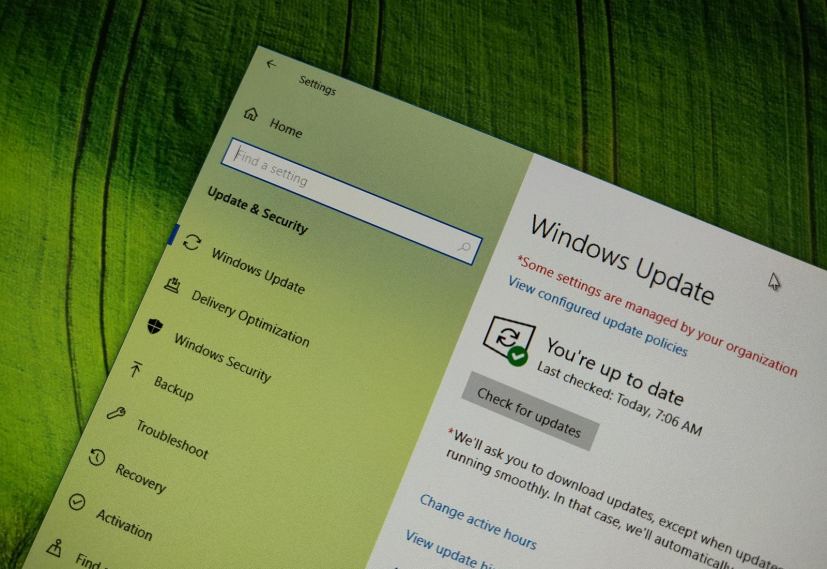Ahead of the April 2019 Patch Tuesday, Microsoft is now rolling out update KB4490481 for devices running Windows 10 version 1809, October 2018 Update, to address a slew of issues.
KB4490481 bumps the version number to build 17763.404, and it fixes problem with audio devices, apps, Microsoft Edge, Internet Explorer, time zone, graphics, USB cameras, authentication, memory leak, data decryption, and a lot more.
Windows 10 update KB4490481 for version 1809
Microsoft has announced KB4490481 in the Windows support site, and it’s referred as “April 2, 2019—KB4490481 (OS Build 17763.404)”. If you’re already running the Windows 10 October 2018 Update on your device, this update will address these problems:
- Addresses an issue that occurs on machines that have multiple audio devices. Applications that provide advanced options for internal or external audio output devices may stop working unexpectedly.
- Includes a fix for Game Mode that ensures the feature will no longer impact your experiences when using the industry’s top streaming and recording software.
- Enables activation of insider builds of Windows 10 Enterprise for Virtual Desktops in Microsoft Azure.
- Fixes a problem that may cause the loss of Favorites or the Reading List in Microsoft Edge after updating the operating system.
- Addresses an issue that causes Internet Explorer to randomly stop working while browsing.
- Fixes a problem with scrolling ActiveX content in a window in Internet Explorer 11 during a user-triggered scroll operation.
- Addresses an issue that prevents the operating system from loading new icon files if it encounters a badly formatted icon file.
- Updates time zone information for São Tomé and Príncipe, Kazakhstan, and for Buenos Aires, Argentina.
- Fixes a problem that prevents the “Turn off app notifications on the lock screen” policy from working.
- Addresses an issue in which the graphics device interface (GDI) DeleteObject() may cause the calling process to stop working.
- Fixes a problem that prevents applications and callers from connecting to destination endpoints when they use network interfaces that don’t have a default gateway.
- Addresses an issue that causes Windows to reuse an expired Dynamic Host Configuration Protocol (DHCP) lease if the lease expired while the OS was shutdown.
- Fixes a problem that causes the RemoteApp window to come to the foreground and to always remain active after closing a window.
- Addresses an issue that prevents the authentication credentials dialog from appearing when an enterprise web server attempts to connect to the Internet.
- Fixes a problem that may prevent Modern apps icons from appearing in the Taskbar and the Task Switcher during a RemoteApps connection.
- Addresses an issue that causes certain Microsoft Store applications to fail to launch or stop working, including WeChat on the Universal Windows Platform (UWP).
- Fixes a problem that fails to register USB cameras correctly for Windows Hello after the out of box experience (OOBE) setup.
- Adds a new Group Policy setting called “Enable Windows to soft-disconnect a computer from a network”.
- Addresses an issue that prevents a virtual smart card from starting when running in conjunction with Citrix 7.15.2000 Workstation VDA software.
- Fixes a problem that prevents users from configuring their screens for high-dynamic-range (HDR) video playback.
- Addresses an issue with the Windows lock screen that prevents users from unlocking a device after multiple smart card users have used the same device.
- Addresses a memory leak that occurs when a system processes logon sessions.
- Fixes a problem that causes Always-On VPN exclusion routes to only work for link-local exclusions.
- Addresses an issue that causes certificate renewal to fail when using CERT_RENEWAL_PROP_ID with the ICertPropertyRenewal interface.
- Fixes a problem that mutes the sound of single-use applications, typically used in kiosk scenarios, after the system resumes from Sleep.
- Addresses an issue to meet GB18030 certificate requirements.
- Fixes a problem that slows server performance or causes the server to stop responding because of numerous Windows firewall rules.
- Addresses an issue that prevents the decryption of data using Windows 10, version 1703 or later versions of Windows.
- Fixes a problem with evaluating the compatibility status of the Windows ecosystem to help ensure application and device compatibility for all updates to Windows.
- Addresses minor issues with unknown options (unknown OPT) in the Extension Mechanisms for DNS (EDNS) for the Windows DNS Server role.
- Addresses a timing issue that may result in an access violation when configuring Switch Embedded Teaming (SET).
- Addresses an issue with the Remove-StoragePool PowerShell cmdlet that fails to clear pool metadata on NVDIMM physical disks.
- Enables X2APIC support for AMD platforms to support 256 or more logical processors on Windows Server 2019.
- Fixes a problem that prevents date parsers from converting future and past dates (Gregorian and Japanese) in compound documents (formerly OLE) to a relevant Japanese Era date.
- Addresses an issue that prevents users from enabling gan-nen support for the Japanese Era.
Download April 2 update for Windows 10
These updates are available immediately, they’ll download and install automatically, but you can always force the update from Settings > Update & Security > Windows Update and clicking the Check for updates button. You can find more details about the most recent updates in the Windows 10 update history tracker guide.
You can download the updates to install them manually with the links below:

